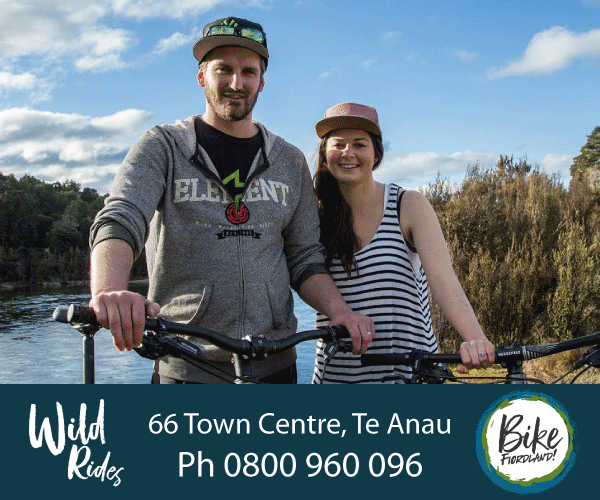Queenstown icon's pollution problem
Reporting by The Queenstown App
11 June 2021, 8:58 AM
 Steamer: TSS Earnslaw photographed on her 100th birthday, in October 2012. Photo: Bernard Spragg
Steamer: TSS Earnslaw photographed on her 100th birthday, in October 2012. Photo: Bernard SpraggQueenstown's Lady of the Lake is under scrutiny for her environmental impact.
The TSS Earnslaw on her own contributes 1% of Queenstown Lakes District's transport-related greenhouse gas emissions, according to data released this week.
Otago Regional Council's first Otago Greenhouse Gas Emission Inventory estimates the much-loved Queenstown icon smoked out 4,076 tonnes of CO2e, between July 2018 and June 2019.
Advertisement: Bulleid Engineering
Carbon dioxide equivalent (CO2e) is a standard unit for counting greenhouse gas (GHG) emissions regardless of whether they're from carbon dioxide or another gas, such as methane.
Gross emissions for the Queenstown Lakes District are estimated at 600,895 tCO2e.
Transport is the highest emitting sector, accounting for 45% of gross emissions. On- and off-road transport accounts for 60%, and aviation accounts for 38% of sector emissions.
That includes all international flights, while previous studies by Queenstown's own council did not.
Advertisement: Thai Anau Restaurant
The GHG inventory, prepared for Otago Regional Council (ORC) by consultants Ernst & Young, makes a point of highlighting the steamship's contribution.
"The coal fired TSS Earnslaw, which operates on Lake Wakatipu, is estimated to generate 4,076 tCO2e, or 1% of total transport emissions for the district," it reads.
The TSS Earnslaw (twin screw steamship) is the oldest passenger carrying coal-powered steamship in the Southern Hemisphere. She was launched in the same year as the RMS Titanic, 1912.
Advertisement: Redcliff Cafe
She's owned by Real Journeys, a subsidiary of Queenstown tourism giant Wayfare, and makes the journey to Walter Peak farm, 45 minutes each way, three to four times a day, depending on the season. She's currently out of the water for her annual maintenance, on a temporary dry dock in Kelvin Heights, from May 3 to June 25.
Wayfare CEO Stephen England-Hall, who was until recently the boss of Tourism NZ, says: "We're committed to ensuring she continues to offer a unique heritage experience to be enjoyed for another century or more.
"We have made a number of modifications over the years to mitigate the smoke and emissions and are currently investigating further options, as we develop our group programme to move towards becoming carbon neutral."

Wayfare CEO Stephen England-Hall
In 2019, the Queenstown Lakes economy generated $3.3 billion in GDP, about a quarter of Otago's total GDP. It is home to an estimated 44,800 people, 19% of Otago's population.
Yet, even with international flights and tourism, according to the data the district is responsible for only 10% of Otago's gross emissions of 5,821,025 tCO2e.
Queenstown's net emissions, when GHG sequestration through forestry etc. is taken into account, is 438,591 tCO2e, which is 13.7% of Otago's 3,180,627 tCO2e net emissions.
Gross and net emissions for the Dunedin City District are estimated at 1,250,047 tCO2e (21%) and 1,033,802 tCO2e (32%) respectively.
Advertisement: Fiordland Escapes
The GHG inventory estimates that the agriculture industry, particularly sheep and beef activities, is the primary source of emissions in Otago across four of the five districts, at 3,774,184 tCO2e gross.
Transport accounts for 918,438 tCO2e gross across Otago, stationary energy (including electricity) 676,856 tCO2e, waste (including landfills) 348,036 tCO2e, and industrial process and product use 103,510
Earlier this week, the Climate Change Commission released its final advice to Government on how New Zealand should cut its emissions over the coming years to meet climate change targets.
It includes banning the importation of all diesel and petrol cars by 2035, ideally by 2030, but the report has been criticised by Greenpeace and others for giving the dairy industry a "free pass to pollute".
Advertisement: Bike Fiordland & Wild Rides
Transport was the biggest emissions source in Queenstown Lakes District and a significant source in Dunedin, while electricity usage makes up a significant proportion of stationary energy emissions across all districts.
Stationary energy accounts for 11% of gross emissions in Queenstown and is dominated by electricity consumption. Waste contributes about 7% of gross emissions in the district, largely due to solid waste disposal to landfills.
ORC strategy manager Dr Anne Duncan said the inventory was prepared in collaboration with Otago's five city and district councils.
"Undertaking this kind of inventory enables us to estimate – sector by sector – where our biggest emitters are in each district. The desktop study used a global protocol for accounting and reporting greenhouse gas emissions, incorporating data held by the Dunedin City, Central Otago, Clutha, Waitaki, and Queenstown Lakes councils, among other sector sources.
"This inventory is an important first step towards reducing emissions in Otago, as it will help us understand our footprint, mitigation options and scenarios, and it will inform discussions and engagement with our communities."
ORC referred the report to the Otago Mayoral Forum.
"The Greenhouse Gas inventory, together with the Otago Climate Change Risk Assessment completed by ORC in March, provide a good basis to develop a regional partnership approach to the current and future challenges of climate change," Dr Duncan said.
ACCOMMODATION







